
(a)
Interpretation:
The complete, detailed mechanism and the major product of the given reaction are to be drawn.
Concept introduction:
Answer to Problem 20.3P
The complete mechanism of the reaction can be drawn as

The major product of the reaction is
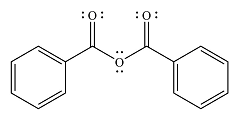
Explanation of Solution
The given reaction is
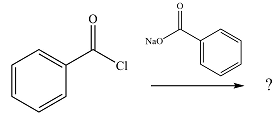
The substrate is an acid chloride, the least stable of the carboxylic acid derivatives. It will, therefore, undergo an acyl substitution via nucleophilic addition-elimination to form an acid anhydride.
The reagent is ionic, and essentially behaves as a negatively charged nucleophile, a carboxylate anion. It will attack and add to the electrophilic carbonyl carbon from the acid chloride. This will result in the formation of a tetrahedral intermediate, with the negative charge on the carbonyl oxygen of the substrate.

In the next step, the leaving group, chloride ion is eliminated to form the product.

The product is more stable than the substrate, therefore, the reaction will occur.
Thus, the complete mechanism can be drawn as

And the major product of the reaction ss

The mechanism and the major product of the given reaction were determined based on nucleophilic addition-elimination provided the possible product is of comparable or higher stability.
(b)
Interpretation:
The complete, detailed mechanism and the major product of the given reaction are to be drawn.
Concept introduction:
Carboxylic acid derivatives undergo acyl group substitution reactions when treated with appropriate nucleophiles. The reaction occurs via nucleophilic addition-elimination involving a tetrahedral intermediate. It may also involve proton transfer step(s). The reaction occurs if the possible product is more stable than the reactant. If the two are of comparable stability, the reaction will occur reversibly. The order of increasing stability of acid derivatives is
Answer to Problem 20.3P
The complete mechanism of the reaction can be drawn as

The major product of the reaction is

Explanation of Solution
The given reaction is

The substrate is an acid anhydride and the reagen is essentially the anionic nucleophile
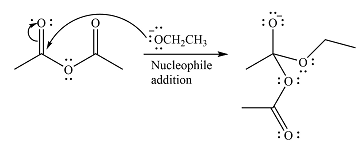
The second step is nucleophilic elimination. The acyl group from the original anhydride is eliminated to form the product, an ester.

Thus, the complete mechanism can be drawn as

Since an ester is more stable than an acid anhydride, the reaction will occur, and the major product will be

The mechanism and the major product of the given reaction were determined based on nucleophilic addition-elimination provided the possible product is of comparable or higher stability.
(c)
Interpretation:
The complete, detailed mechanism and the major product of the given reaction are to be drawn.
Concept introduction:
Carboxylic acid derivatives undergo acyl group substitution reactions when treated with appropriate nucleophiles. The reaction occurs via nucleophilic addition-elimination involving a tetrahedral intermediate. It may also involve proton transfer step(s). The reaction occurs if the possible product is more stable than the reactant. If the two are of comparable stability, the reaction will occur reversibly. The order of increasing stability of acid derivatives is
Answer to Problem 20.3P
The complete mechanism of the reaction can be drawn as

The major product of the reaction is
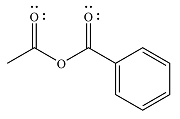
Explanation of Solution
The given reaction is
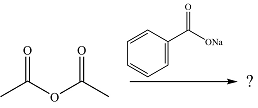
The substrate is an anhydride, with electrophilic carbons. The reagent is an ionic compound, which will essentially act as an anionic nucleophile, a carboxylate ion.
In the first step, the carboxylate ion will add to one of the carbonyl carbons of the anhydride. This will result in the formation of a tetrahedral intermediate with the negaive charge shifting to the ccorresponding carbonyl oxygen.
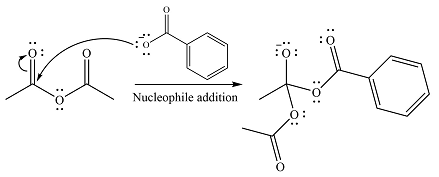
In the next step, the leaving group will be liminated as a carboxylate anion.
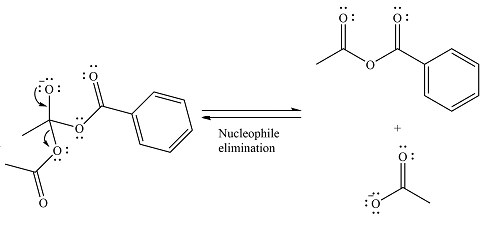
The major product is another acid anhydride of comparable stability. This means the reaction will occur, with reversible addition and elimination steps.
Thus, the complete mechanism can be drawn as

Thus, the major product will be

The mechanism and the major product of the given reaction were determined based on nucleophilic addition-elimination provided the possible product is of comparable or higher stability.
(d)
Interpretation:
The complete, detailed mechanism and the major product of the given reaction are to be drawn.
Concept introduction:
Carboxylic acid derivatives undergo acyl group substitution reactions when treated with appropriate nucleophiles. The reaction occurs via nucleophilic addition-elimination involving a tetrahedral intermediate. It may also involve proton transfer step(s). The reaction occurs if the possible product is more stable than the reactant. If the two are of comparable stability, the reaction will occur reversibly. The order of increasing stability of acid derivatives is
Answer to Problem 20.3P
There is no reaction.
Explanation of Solution
The given reaction is
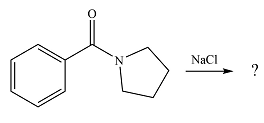
The substrate is a highly stable amide. If the
Since the possible product is of lower stability than the substrate, the reaction will not occur.
The reaction will not occur if the possible product is of lower stability than the susbtrate.
(e)
Interpretation:
The complete, detailed mechanism and the major product of the given reaction are to be drawn.
Concept introduction:
Carboxylic acid derivatives undergo acyl group substitution reactions when treated with appropriate nucleophiles. The reaction occurs via nucleophilic addition-elimination involving a tetrahedral intermediate. It may also involve proton transfer step(s). The reaction occurs if the possible product is more stable than the reactant. If the two are of comparable stability, the reaction will occur reversibly. The order of increasing stability of acid derivatives is
Answer to Problem 20.3P
There is no reaction.
Explanation of Solution
The given reaction is

The substrate is an ester while the possible product of the reaction would be an acid anhydride. Since an ester is more stable than an acid anhydride, the reaction will not occur.
The reaction will not occur if the possible product is of lower stability than the susbtrate.
(f)
Interpretation:
The complete, detailed mechanism and the major product of the given reaction are to be drawn.
Concept introduction:
Carboxylic acid derivatives undergo acyl group substitution reactions when treated with appropriate nucleophiles. The reaction occurs via nucleophilic addition-elimination involving a tetrahedral intermediate. It may also involve proton transfer step(s). The reaction occurs if the possible product is more stable than the reactant. If the two are of comparable stability, the reaction will occur reversibly. The order of increasing stability of acid derivatives is
Answer to Problem 20.3P
The complete mechanism of the reaction can be drawn as

The major product of the reaction is
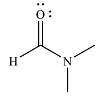
Explanation of Solution
The given reaction is

The substrate is an ester, with an electrophilic carbonyl carbon. The reagent is essentially an anionic nucleophile
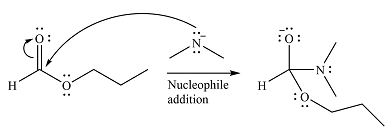
In the second step, the alkoxide group from the original ester will be eliminated to form the product, an amide.

Since the product is more stable than the substrate, the reaction will occur.
Thus, the complete mechanism can be drawn as

And the product of the reaction will b

The mechanism and the major product of the given reaction were determined based on nucleophilic addition-elimination provided the possible product is of comparable or higher stability.
Want to see more full solutions like this?
Chapter 20 Solutions
ORGANIC CHEMISTRY PRINCIPLES & MECHANISM
- 19) Which metal is most commonly used in galvanization to protect steel structures from oxidation? Lead a. b. Tin C. Nickel d. Zinc 20) The following molecule is an example of a: R₁ R2- -N-R3 a. Secondary amine b. Secondary amide c. Tertiary amine d. Tertiary amidearrow_forwardpls helparrow_forwardIndicate the product of the reaction OH OH CH3-CC- Ph + H2SO4 a 20°C | CH3 Pharrow_forward
- 35) Complete the following equation by drawing the line the structure of the products that are formed. Please note that in some cases more than one product is possible. You must draw all possible products to recive full marks! a. ethanol + 2-propanol + H2SO4 → b. OH conc. H2SO4 CH2 H3C CH + K2Cr2O7 C. d. H3C A pressure CH3 + H2 CH Pt catalystarrow_forward21) The rate of reaction depends upon: a. the concentration and nature of reactants b. the temperature of the reaction C. whether or not a catalyst was used d. all of the above 22) A Maxwell-Boltzmann curve shows the distribution of molecular energies in a reaction system. When the temperature in this system is increased, the peak is a. higher and further to the right. b. higher and further to the left. c. lower and further to the right. d. lower and further to the left. 23) Which of the following correctly describes the reaction represented by the reaction below? CaCO3 (s) + energy → CaO (s) + CO2 (g) a. It is exothermic and the potential energy is greater in the reactants than the products. b. c. It is exothermic and the potential energy is greater in the products than the reactants. It is endothermic and the potential energy is greater in the products than the reactants. d. It is endothermic and the potential energy is equal for the products and reactants.arrow_forwardpls helparrow_forward
- 27) Draw the energy level diagram and write the full and shorthand electron configuration for a neutral sulfur atom.arrow_forwardIndicate whether these compounds are isomers, enantiomers, or tautomers. OCH OCH محمد ممدarrow_forward30) Substance A to E below are listed with several of their properties. The identities of the substances are identified in random order below: Iron, ethane, ethanol, sodium nitrate, graphite First classify each substance as either a polar covalent compound, non-polar covalent compound, ionic compound, metallic solid, or network solid. Write your predictions in the sixth coloumn of the chart, under "type of substance." Then, identify the identity of the substance in the last coloumn. Substance Melting Point Boiling Point Solubility in H₂O Electrical Conductivity Type of Substance Identity of Substance (°C) (°C) as: Solid, Liquids, Solution A -182 -88 Insoluble No/No/- B 1538 2862 Insoluble Yes/Yes/- C 308 380 Soluble Yes/Yes/Yes Ꭰ 3456 Insoluble No/-/- E -114 78 Soluble No/No/Noarrow_forward
 Organic Chemistry: A Guided InquiryChemistryISBN:9780618974122Author:Andrei StraumanisPublisher:Cengage Learning
Organic Chemistry: A Guided InquiryChemistryISBN:9780618974122Author:Andrei StraumanisPublisher:Cengage Learning
